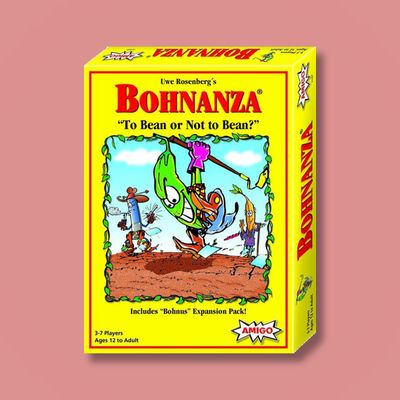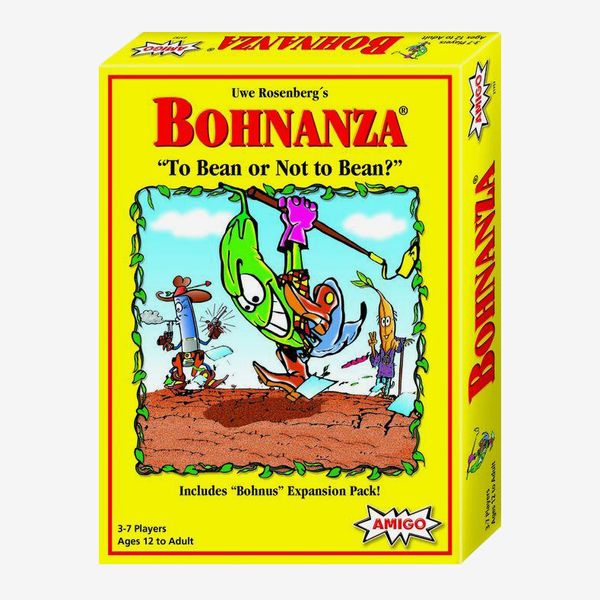
A version of this story originally appeared on the Strategist U.S.
I’m not above playing board games, but if they involve intense strategizing or anything more than putting words together (Scrabble, Bananagrams), I find them needlessly complicated and mind-numbingly boring. I zone out when the rules are being explained, then ask a million questions, annoying everyone at the table.
Bohnanza is different. My sister and her boyfriend, both big game geeks, introduced me to it, and it’s the only game I ask them to bring when they visit from Philly. It’s fun. It’s fast. The artwork is delightful. Best of all, it’s easy to learn, even for a dolt like me. Invented by legendary German game designer Uwe Rosenberg in 1997, it’s technically a card game that involves managing the cards in your hand in a specific sequence, collecting sets of cards, and trading and negotiation.
Each player is a bean farmer who plants different varieties of beans, all humorously depicted. (Picture a garden bean thwacking the ground with a hoe; a gun-slinging, cowboy blue bean; a chili bean lighting up a cigarette while standing in a puddle of gasoline; a stink bean wallowing in its own filth; a multitasking, crazy-eyed coffee bean.) Players harvest their beans in exchange for gold coins. Some beans are worth more than others, based on how frequently they appear in the deck. Depending on the number of players (it’s meant for three to seven, though there is a “duel” version as well), there are two or three fields in which to plant your beans. You can plant beans of only one type in each field, and the more beans you harvest at once, the more coins you’ll collect.
There are a few “hooks,” as one reviewer calls them, which make the game interesting. The first is the concept of the fixed hand: You have to play your hand in the order of cards first dealt or drawn, and you can’t rearrange them. This rule means your hand dictates which bean you can plant in each field at each turn. But in order to plant a new variety, you may be forced to prematurely harvest an existing field that you might have wanted to cultivate longer to earn more coins.
This is where it gets exciting because the second hook is that you have the opportunity to trade beans with other players at each turn. By trading, you can not only maximize the crop yield of your planted field but manipulate the order of cards in your hand by trading away beans that may be inconveniently placed.
And this is really the genius and the fun of the game. As in any good business deal, you’ll want to propose and weigh offers from different players before making a swap that’s mutually beneficial. But you don’t want to give away too much — whether it’s physical cards, information about your hand, or your intentions — since, after all, everyone is vying to become the richest, most successful bean farmer in the land. While it’s a pretty straightforward premise, you’re constantly thinking one or two steps ahead, taking note of other players’ bean fields, and putting your negotiation skills to use — all things I didn’t know I enjoyed doing!
I didn’t think I could ever love a game, but this is the only one I actually look forward to playing and introducing to friends when there are four or more adults in my home. (I’ve played with a group of six, and it got raucous.) I even win sometimes! (This rarely happens with other games.) Although a full game can take 45 minutes or longer, everything moves at an invigorating clip. Everyone is almost always down for a second round. And no one complains about letting me join in.
The Strategist UK is designed to surface the most useful, expert recommendations for things to buy across the vast e-commerce landscape. Read about who we are and what we do here. Our editors update links when possible, but note that deals can expire and all prices are subject to change.

